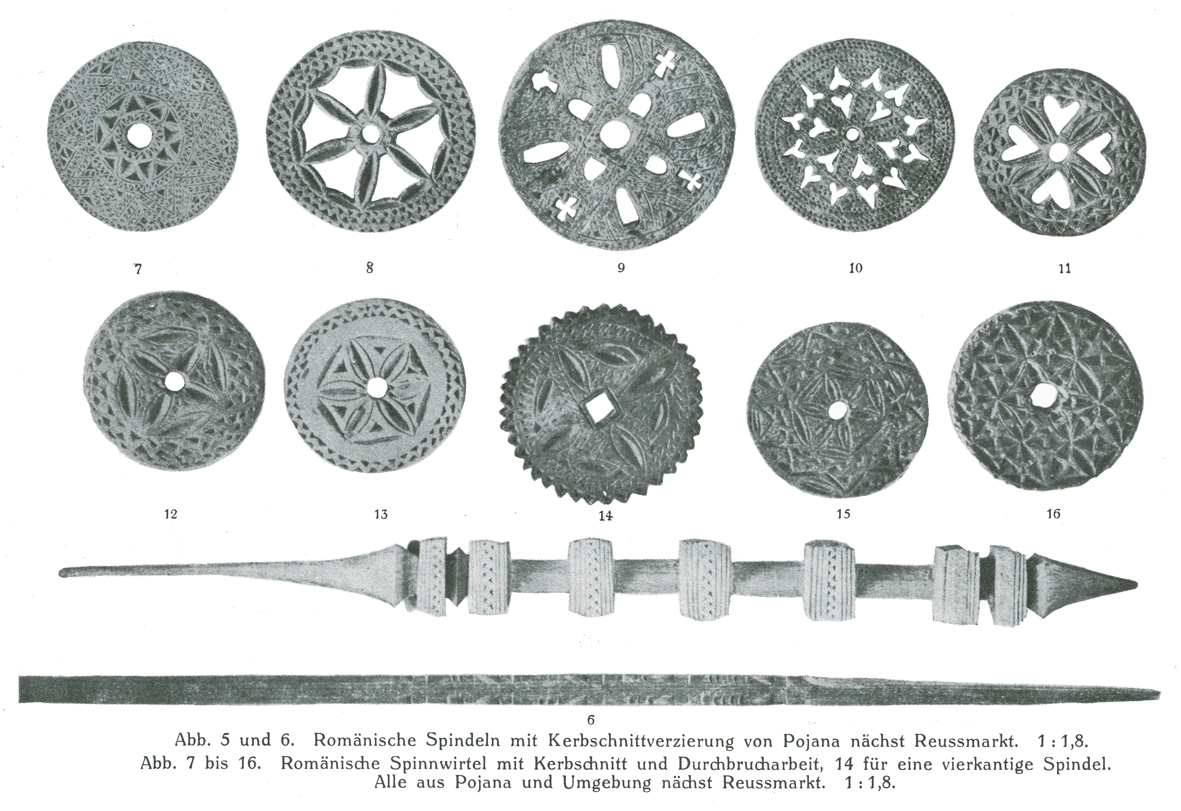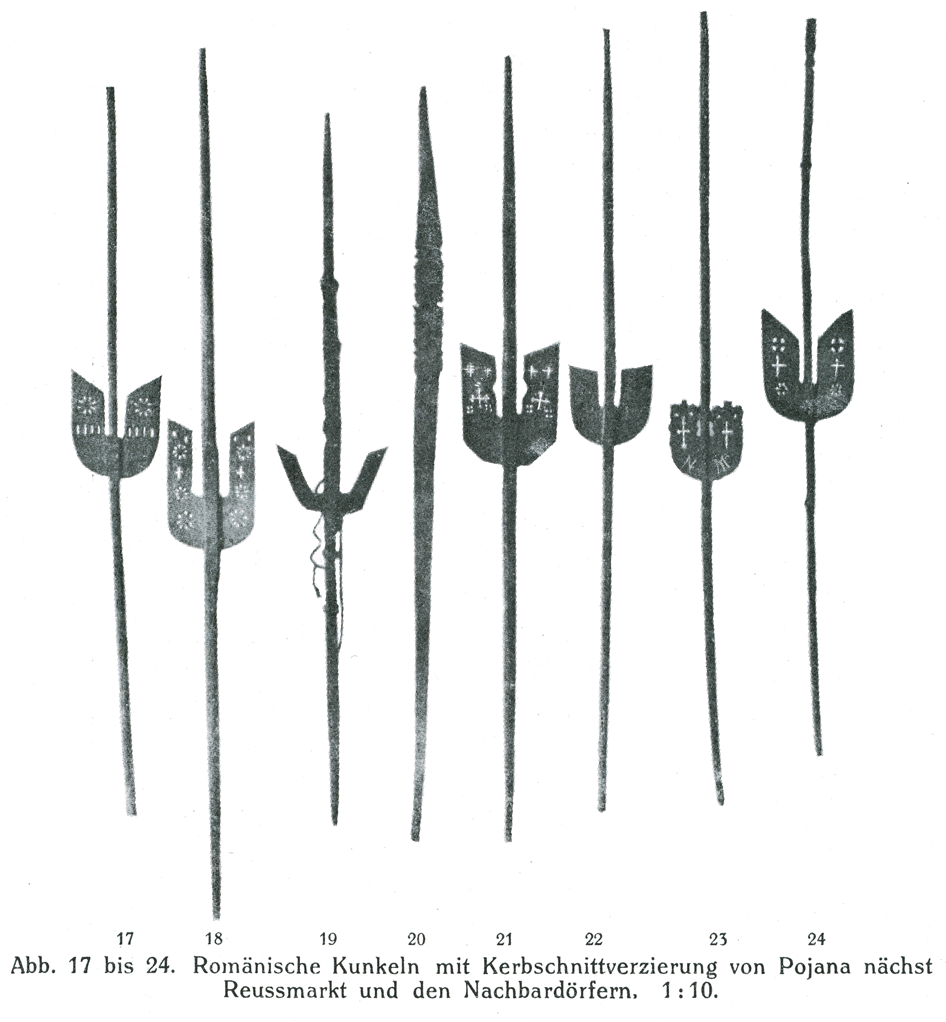Projects and Science
Romania
Europe
ABT
Spinning by the Romanian people of Transylvania
In Romania spinning (a toarc) is done exclusively by women and girls. They use sheep wool (lâna) and hemp (canepa), the latter in several degrees of fineness (calti = tow, fuior = fine hemp, etc.), seldom flax (in), that they consequently grow only in exceptional cases . They spin with the old inherited hand spindle (fu) as in many areas the spinning wheel is not known. They believe that thread cannot be spun as nicely and well with a spinning wheel as with a spindle. If there is a spinning wheel anywhere in use it is, as a rule, only a hand-driven wheel and is used as a result of crippled or sore fingers that are not capable of operating the spindle, or in communities where weaving is done commercially . The 320-400 mm long spindles are purchased from gypsies who carve large amounts of willow or hazel sticks, or - especially in mountain villages - made in every household as needed. In the latter case spruce is chosen for the spindle, which is then usually worked only round at the ends, but square in the middle (Fig. 5 and 6). During the summer months young men herding the flock in the mountains carve spindles, spindle whorls and distaffs in their pastime, as well as other things that they often decorate with skillful carvings.
Spinning takes place in the winter months after the completion of field work. For this purpose women and girls gather in separate groups in different houses. They call this sedetoáre (spin society) and spend the evenings often spinning till midnight. In mountain areas where there is no, or only a limited extent, of field work to be done and work mostly revolves around the livestock, the women also spin during the summer time. On their walks from the town to the mountain, where their husbands and herds stay, they carry the distaff on the left side sticking in the belt or clamped between arm and body and walk their way accompanied by the whirring of the spindle. Whorls (pristen, prisnel), Figure 7-16, are used regularly, but always, whether wool, hemp or flax is spun, just at the beginning of the work. As soon as the spindle has obtained sufficient weight due to the cop, the whorl is removed and no longer used. The whorl consists of a thin, round and on both sides flat board made of beech, hazelnut, pine or other wood, but never bone, horn, clay, stone or metal. If the whorl is not at hand or has been lost, a small potato or an apple is placed on the spindle instead. Whorls are usually not well represented, mostly there is only one per household and it is passed around by the occupants. The Romanian women use, whether they weave coarsest wool or fine flax, invariably the same light spindle and the same spindle whorl. When they spin coarse yarn they remove the whorl from the spindle earlier than if they spin fine yarn, since the spindle gains weight faster with the former than with the latter. Heavy whorls and spindles are always avoided, since this greatly impairs the sense of touch of the fingers which rotate the spindle and consequently the assessment of whether the newly spun yarn has enough twist or not. A heavy spindle would also tire the right hand that is always stretched during spinning.

The typical Romanian distaff (Fig. 17 to 24) consists of a straight, often more than one meter long rod of 15 to 20 mm thickness. At about half the length or slightly above there is almost always a dovetail-shaped board (corne = horns) inserted that prevents the fiber (cáer), that is fastened with a band, from sliding down the shaft. Originally Romanian distaffs seem to have only consisted of a forked branch. This is implied by the name "furca" for the distaff, which is also used for the pitchfork. Old women usually use a branch of wood that has merely been cut into an appropriate length and which is often not even stripped of its bark as distaff; girls however mostly use distaffs with more or less elaborate carvings or fretwork, which are sometimes additionally decorated with small, inlaid mirrors. In some communities it is the custom that young people occasionally smash all the distaffs of the last girl spin society of the year, as these can now be spared and for which they pay compensation in the course of the next summer.

From: Mauritius von Kimakowicz-Winnicki, Spinn- und Webewerkzeuge: Entwicklung und Anwendung in vorgeschichtlicher Zeit Europas. Mannus-Bibliothek 2, Verlag Curt Kabitzsch (Leipzig 1. ed. 1910 / 2. unpubl. ed. 1930), 10-13.